| Colon Theater Ballet | |
|---|---|
| General information | |
| Name | Colon Theater Ballet |
| Year founded | 1925 |
| Principal venue | Teatro Colón (Colon Theater) |
| Website | Official Website |
| Senior staff | |
| Director | Lidia Segni |
| Artistic staff | |
| Artistic Director | Paloma Herrera |
| Other | |
| Orchestra | Buenos Aires Philharmonic |
| Official school | Colon Theater Superior Institute of Art |
| Formation | Principal Soloist Corps de Ballet |
Colon Theater Ballet is a ballet company based in Buenos Aires, Argentina. The company is attached to the Colon Theater, which is also home to the Buenos Aires Philharmonic orchestra and the Colon Theater Opera company. It was established in 1925 and is the oldest ballet company in South America.
The Colon Theater Ballet is based at the Colon Theater in Argentina's capital and largest city, Buenos Aires. The Colon Theater was built in 1908 and an opera company was created at that time at the new theater. Colon Theater is the largest classical music hall in South America. Although the current Colon Theater opened in 1908, it was not until 1925 that the Theater's own dance company gave its first performance. Before that, the Colon Theater had hosted foreign ballet artists on its stage, with touring companies from Europe presenting full ballets as early as 1867. [1] Vaslav Nijinsky's final performance was at the Colon Theatre on September 26, 1911, when he danced in Le Spectre de la Rose and Petrushka. [2]
From the late 1930s to the late 1940s, the company developed to a larger scale under the choreographer Margarita Wallman. The Ballets Russes company, under Colonel de Basel, fled World War II and found temporary refuge at the Colon Theater during the 1940s. [3] Avant garde choreographers of the period worked in Buenos Aires, including Bronislava Nijinska, Michel Fokine, who staged eight of his ballets at the Colon Theater Ballet; [4] Serge Lifar; Leonide Massine, Antony Tudor and David Lichine. [5]
Even larger productions were staged during the 1950s. By the 1960s, lavish productions with internationally known dancers such as Rudolph Nureyev were held at the Colon Theater. [6] The dance world of Argentina suffered a serious setback on October 10, 1971, when 10 of the country's top ballet performers died in a plane crash. [7]
Argentine ballet gained a higher profile during the 1980s. Maximiliano Guerra rose to the position of principal at the English National Ballet, and returned with that company to perform Swan Lake at the Colon Theater. Paloma Herrera was already well known while being a dance student at Colon Theater. Julio Bocca studied dance at the Colon, then went on to perform internationally. He founded Ballet Argentino in 1990, with a focus on young Argentinian dancers. [8]
Colon Theater Ballet helped launch the newly renovated Colon Theater during its 2010 season.
Many internationally known ballet artists have performed on the Colon Theatre stage, including: Anna Pavlova, Vaslav Nijinsky, Rudolf Nureyev, Alicia Alonso, Maya Plisetskaya, Margot Fonteyn, Mikhail Barishnikov, Vladimir Vassileyev, and Antonio Gades. Notable Argentinian dancers who have performed at Colon Theatre include: María Ruanova, Olga Ferri, Michel Borovsky, José Neglia, Norma Fontenla, Wasil Tupin, Esmeralda Agoglia, Jorge Donn, Julio Bocca, Maximiliano Guerra, and Paloma Herrera. [9]
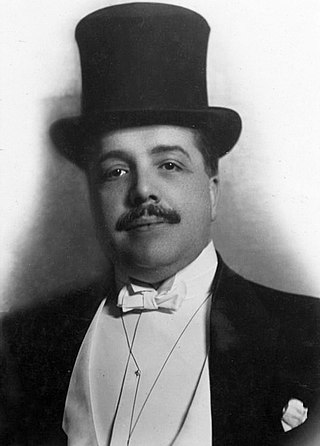
Sergei Pavlovich Diaghilev, also known as Serge Diaghilev, was a Russian art critic, patron, ballet impresario and founder of the Ballets Russes, from which many famous dancers and choreographers would arise.

Vaslav or Vatslav Nijinsky was a Russian ballet dancer and choreographer of Polish ancestry. He is regarded as the greatest male dancer of the early 20th century.

The Teatro Colón is a historic opera house in Buenos Aires, Argentina. It is considered one of the ten best opera houses in the world by National Geographic. According to a survey carried out by the acoustics expert Leo Beranek among leading international opera and orchestra directors, the Teatro Colón has the room with the best acoustics for opera and the second best for concerts in the world.

Bronislava Nijinska was a Russian ballet dancer of Polish origin, and an innovative choreographer. She came of age in a family of traveling, professional dancers.

The Afternoon of a Faun is a ballet choreographed by Vaslav Nijinsky for the Ballets Russes, and was first performed in the Théâtre du Châtelet in Paris on 29 May 1912. Nijinsky danced the main part himself. The ballet is set to Claude Debussy's symphonic poem Prélude à l'après-midi d'un faune. Both the music and the ballet were inspired by the poem L'Après-midi d'un faune by Stéphane Mallarmé. The costumes, sets and programme illustrations were designed by the painter Léon Bakst.

Julio Adrián Lojo Bocca is an Argentine ballet dancer. Bocca spent twenty years as a principal dancer with American Ballet Theatre. From 2010 to 2018, he served as artistic director of the National Ballet of Uruguay, administered by SODRE, the country's broadcasting and cultural authority.

The Ballets Russes was an itinerant ballet company begun in Paris that performed between 1909 and 1929 throughout Europe and on tours to North and South America. The company never performed in Russia, where the Revolution disrupted society. After its initial Paris season, the company had no formal ties there.
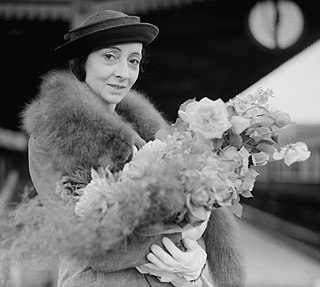
Olga Alexandrovna Spessivtseva was a Russian ballerina whose stage career spanned from 1913 to 1939.

Le Spectre de la rose is a short ballet about a young girl who dreams of dancing with the spirit of a souvenir rose from her first ball. The ballet was written by Jean-Louis Vaudoyer who based the story on a verse by Théophile Gautier and used the music of Carl Maria von Weber's piano piece Aufforderung zum Tanz as orchestrated by Hector Berlioz.
A danseur noble traditionally was a male ballet dancer who projected great nobility of character. Over the last century, the term has been used to define a male principal dancer who performs at the highest theatrical level combining grace with ability. Some use danseur noble as the masculine equivalent to a Prima Ballerina, or to refer to the male partner of a ballerina during a pas de deux.

Raquel Forner (1902–1988) was an Argentine painter known for her expressionist works.

Norma Fontenla was an Argentine prima ballerina.
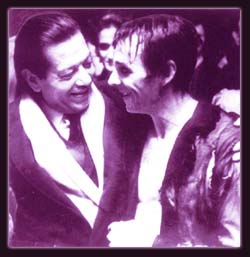
José Neglia was a notable Argentine ballerino, who perhaps more than any other figure, helped popularize the classical ballet in his country.
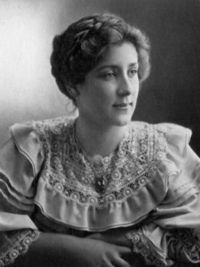
Romola de Pulszky, , was a Hungarian aristocrat, the daughter of a politician and an actress. Her father had to go into exile when she was a child, and committed suicide in Australia. As a young woman she became interested in dance and specifically Vaslav Nijinsky, the noted premier danseur of the Ballets Russes. They married in Buenos Aires on 10 September 1913 while the company was on tour. They had two daughters, Kyra and Tamara, before he was institutionalized for the remaining 30 years of his life for schizophrenia.

Primera Plana was a weekly glossy political, cultural and current affairs magazine published in Buenos Aires, Argentina, between 1962 and 1973. The magazine was very influential in shaping the journalism tradition in the country.

Lida Martinoli (1914–1991) was an Argentine dancer, choreographer, and theatre performer in Buenos Aires. Born in Rosario, Santa Fe in 1914, she was the daughter of the artists Fanny Montiano and Carlos Martinoli. She studied ballet at La Scala in Milan before returning to Buenos Aires in 1932. She joined the corps de ballet of the Teatro Colón, where she danced until 1956. At the Teatro Colón, she served as prima ballerina during the 1940s, dancing the choreographies of Vaslav Nijinsky and Margarita Wallmann and starring in her version of The Nutcracker with Michael Borovski and Maria Ruvanova. In 1953, as prima ballerina for Teatro Colón, she performed at Carnegie Hall in her North American debut. When she retired from dancing, Martinoli began to choreograph, and is known for her kitschy and outlandish dances - the choreography for "La Leprosa" required the actor to stick ham to themselves that fell off during the dance, imitating the symptoms of leprosy. She died in Santa Fe in 1991. Screenwriters Kado Kostzer and Afredo Rodriguez Arias wrote the play "Familie d'Artistes" about Lida and the Martinoli family in 1989, which was staged at the Teatro Maipo in Buenos Aires in 1991.

María Ruanova was an Argentine dancer, choreographer, teacher and ballet master, known for her performances at the Teatro Colón and internationally. She is considered the first Argentina-grown ballet dancer to gain international fame.

Elena Smirnova was the last prima ballerina of the Mariinsky Theater in the Imperial period of Russia. Starring in many leading roles, she often performed choreography created by Marius Petipa and Boris G. Romanov. Participating in early films of Germany and Russia, she made eight silent films and participated in the premiers of both the Ballets Russes in Paris and in the first performance of Russian ballet in Japan.
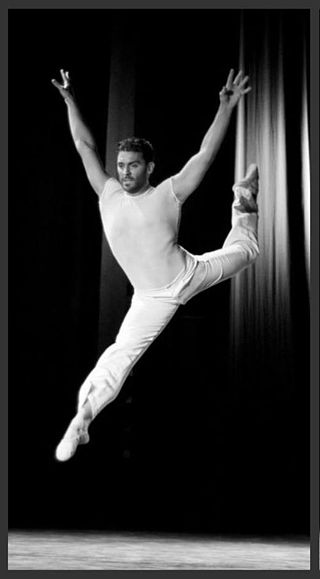
Hernán Javier Piquín is an Argentine dancer and choreographer. He was born in the city of Los Polvorines, in the northwest of Greater Buenos Aires, 33 km from the center of the Federal Capital. He attended the Higher Institute of Art of the Teatro Colón.